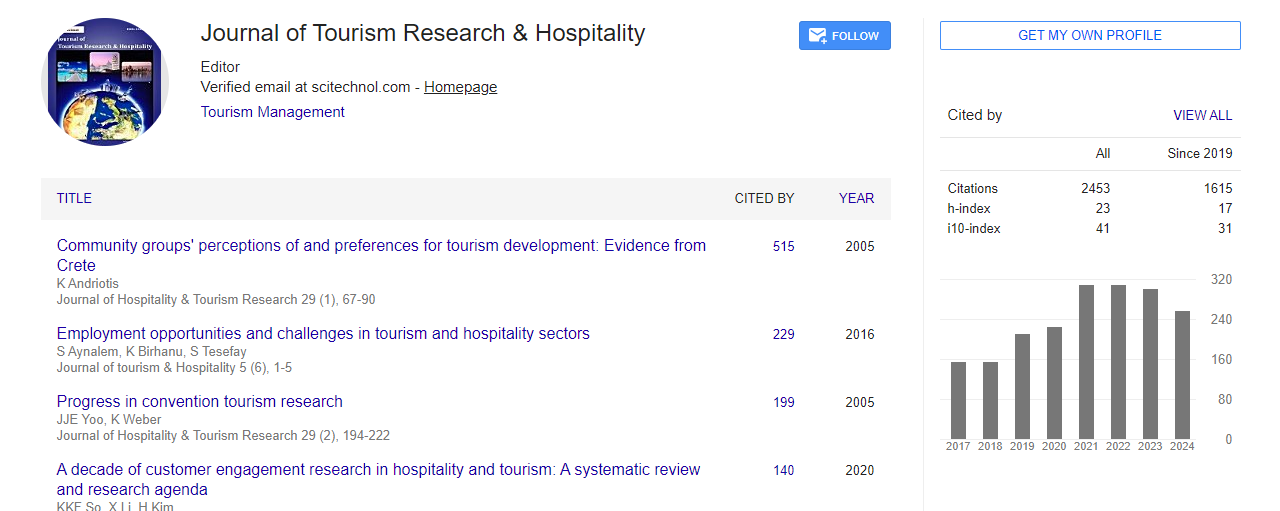Editorial, J Tourism Res Hospitality Vol: 1 Issue: 3
Asset Optimization According to Customer Preference: The Necessary Evolution of Revenue Management
| Amy M. Gregory* | |
| University of Central Florida, USA | |
| Corresponding author : Amy M. Gregory Assistant Professor, University of Central Florida, Rosen College of Hospitality Management, 9907 Universal Boulevard, Orlando, FL 32819, USA Tel: 407-903-8176 E-mail: Amy.Gregory@ucf.edu |
|
| Received: August 06, 2012 Accepted: August 06, 2012 Published: August 10, 2012 | |
| Citation: Gregory AM (2012) Asset Optimization According to Customer Preference: The Necessary Evolution of Revenue Management. J Tourism Res Hospitality 1:2. doi:/10.4172/2324-8807.1000e109 |
Abstract
Asset Optimization According to Customer Preference: The Necessary Evolution of Revenue Management
From the initial applications of revenue management in the airline industry approximately 60 years ago, the hospitality segment has since clamored to adapt the concept of forecasted demand to pricing strategies in hotels, restaurants, golf courses, casinos, sporting events, and theme parks. Through a review of 25 years of published research on revenue management, Anderson and Xie, identified that the evolution of revenue management has moved beyond the focus of revenue measurement at the unit level, i.e., average daily rates in hotels, to a more comprehensive view of total revenues or profits generated by the inventory at the enterprise level, i.e., RevPAR (revenue per available room), GOPPAR (gross operating profit per available room); each of which has its comparable measure in the various industry segments, i.e., RevPASH (revenue per available seat hour in restaurants).
 Spanish
Spanish  Chinese
Chinese  Russian
Russian  German
German  French
French  Japanese
Japanese  Portuguese
Portuguese  Hindi
Hindi 

